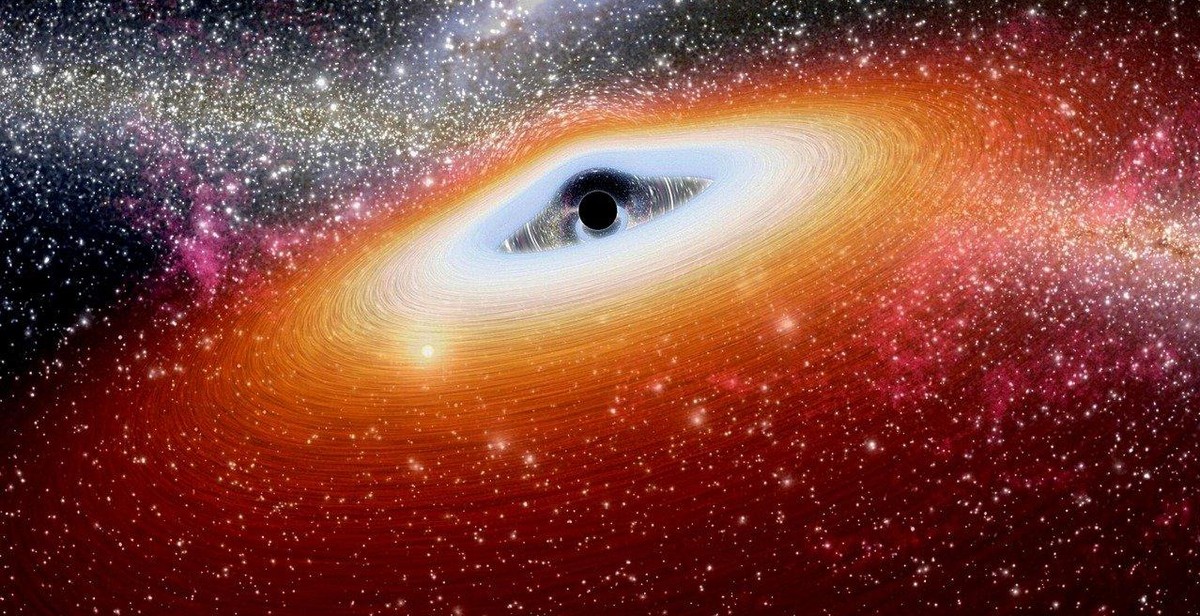Introduction
Black holes have captivated the imagination of scientists and the general public alike for decades. These enigmatic cosmic entities, characterized by their immense gravitational pull, continue to be a subject of intense research and fascination in the field of astrophysics.
Black Holes: The Mysterious Giants of the Universe explores the nature, formation, and behavior of these celestial phenomena that defy conventional understanding.
At the heart of a black hole lies a singularity—an infinitely dense point where matter is compressed to an extreme degree. Surrounding this singularity is the event horizon, a boundary beyond which nothing, not even light, can escape the gravitational pull. This fascinating concept challenges our understanding of space, time, and the laws of physics as we know them.
Throughout the article, we will delve into various aspects of black holes, such as their classification, sizes, and the mechanisms by which they form. We will also explore the remarkable effects they have on their surroundings, including the creation of accretion disks and powerful jets of radiation.
Join us on a journey into the depths of the universe as we unravel the mysteries of black holes and attempt to comprehend these awe-inspiring giants that continue to intrigue scientists and spark the imagination of stargazers worldwide.

What are Black Holes?
A black hole is a fascinating and mysterious phenomenon that exists in the vast expanse of our universe. It is an area in space where the gravitational pull is so strong that nothing, not even light, can escape its grasp. Black holes are formed through the collapse of massive stars, resulting in an incredibly dense and compact object with an intense gravitational field.
Formation of Black Holes
Black holes are formed when a massive star exhausts its nuclear fuel and undergoes a supernova explosion. During this explosion, the outer layers of the star are expelled into space, leaving behind a dense core. If the core is around three times the mass of our sun or more, it collapses under its own gravity, forming a black hole.
This collapse causes the star’s matter to be compressed into an infinitesimally small point, known as a singularity, surrounded by a region called the event horizon. The event horizon is the point of no return, beyond which anything that enters can never escape the gravitational pull of the black hole.
Types of Black Holes
There are three main types of black holes based on their mass:
- Stellar Black Holes: These are formed from the collapse of massive stars and typically have a mass ranging from a few times that of our sun to several tens of times its mass.
- Intermediate Black Holes: These black holes have a mass ranging from hundreds to thousands of times that of our sun. Their origin is still a topic of research and debate.
- Supermassive Black Holes: These colossal black holes have a mass millions or even billions of times that of our sun. They are found at the centers of galaxies, including our own Milky Way.
Black holes continue to captivate scientists and researchers, offering insights into the fundamental nature of space, time, and gravity. Studying black holes helps us better understand the mysteries of the universe and the laws that govern it.
Characteristics of Black Holes
Black holes are celestial objects that have fascinated scientists and astronomers for centuries. These mysterious giants possess unique characteristics that set them apart from any other known objects in the universe. Let’s explore some of the key features of black holes:
Event Horizon
The event horizon is the boundary that marks the point of no return for anything approaching a black hole. Once an object crosses the event horizon, it is trapped by the black hole’s gravitational pull and cannot escape. This boundary is formed due to the immense gravitational force of the black hole, which bends spacetime to such an extent that even light cannot escape its grasp.
Singularity
At the center of a black hole lies a point called the singularity. It is a region of infinite density and zero volume, where the laws of physics as we know them cease to exist. The singularity is thought to be a point of infinite gravitational force, where matter and energy are compressed to an unimaginable state. Our current understanding of physics breaks down when attempting to describe the singularity.
Spacetime Curvature
Black holes have an immense gravitational pull that causes a curvature in the fabric of spacetime. This curvature is responsible for the bending of light and the warping of the surrounding space. The stronger the gravitational pull of a black hole, the greater the curvature of spacetime. This phenomenon is a fundamental aspect of black holes and plays a crucial role in their unique characteristics.
Understanding the characteristics of black holes is essential for unraveling the mysteries of the universe. Scientists continue to study these enigmatic objects to expand our knowledge of the cosmos and push the boundaries of our understanding of physics.
Interaction with Matter
Black holes have a profound interaction with matter in their vicinity. One of the most fascinating aspects of this interaction is the formation of an accretion disk, which occurs when matter falls towards a black hole. As matter spirals inward, it forms a disk-like structure around the black hole. This disk is composed of gas, dust, and other celestial debris that are attracted by the immense gravitational pull of the black hole.
The accretion disk emits an incredible amount of energy in the form of light and other electromagnetic radiation. This radiation is generated as the matter in the disk heats up due to friction and gravitational forces. As a result, accretion disks can be some of the brightest objects in the universe, visible across vast distances.
Another intriguing phenomenon associated with black holes is Hawking radiation. Proposed by physicist Stephen Hawking in 1974, Hawking radiation suggests that black holes can emit particles and energy over time. According to quantum mechanics, pairs of particles and antiparticles continuously pop in and out of existence in the vacuum of space. Near the event horizon of a black hole, one of these particles can fall into the black hole while the other escapes into space, resulting in the emission of radiation.
This process gradually causes a black hole to lose mass and energy, eventually leading to its complete evaporation. Although Hawking radiation is incredibly weak for stellar-mass black holes, it becomes more significant for smaller, primordial black holes, potentially impacting their lifespan.

Black Holes and Cosmology
Supermassive Black Holes
Supermassive black holes are fascinating celestial objects that reside at the centers of galaxies. These giants have masses millions or even billions of times greater than that of our sun. Scientists believe that supermassive black holes form through a process called accretion, where they continuously grow by devouring surrounding matter such as gas, dust, and even stars.
These black holes are known for their immense gravitational pull, which is so strong that nothing, not even light, can escape from their grasp. The event horizon, the boundary beyond which nothing can escape, surrounds the singularity at the center of a black hole. Supermassive black holes are often surrounded by an accretion disk, a swirling disk of gas and dust that emits intense radiation as it spirals into the black hole.
Role in Galaxy Formation
Supermassive black holes play a crucial role in the formation and evolution of galaxies. It is believed that the growth of galaxies and the growth of their central black holes are closely intertwined. As matter falls into the black hole, it releases an enormous amount of energy, which can have a profound impact on the surrounding galaxy.
The intense radiation emitted by the accretion disk can heat up the surrounding gas, preventing it from cooling and forming new stars. This feedback mechanism, known as AGN (Active Galactic Nuclei) feedback, regulates star formation in galaxies and shapes their overall structure. It is believed that supermassive black holes have a profound influence on the size, shape, and properties of galaxies.
Furthermore, the gravitational pull of supermassive black holes can also influence the motion of nearby stars and gas, contributing to the overall dynamics of the galaxy. The presence of a supermassive black hole at the center of a galaxy is therefore a crucial factor in understanding its formation and evolution.

Observing Black Holes
Black holes have long captivated the imagination of astronomers and space enthusiasts. These enigmatic cosmic entities are incredibly difficult to observe directly due to their strong gravitational pull, which even light cannot escape. However, scientists have devised ingenious ways to study black holes through both direct and indirect observations.
Direct Observation
Directly observing a black hole is an arduous task due to their elusive nature. Scientists have relied on detecting the effects of a black hole’s gravity on nearby objects. One method is through tracking the movement of stars near the black hole. As a black hole pulls in surrounding matter, it creates an accretion disk, releasing powerful X-ray emissions that can be detected by specialized instruments like X-ray telescopes.
Another technique involves studying the gravitational lensing effect caused by black holes. When light passes close to a black hole, its path is bent due to the intense gravitational field. This bending of light can create mesmerizing visual distortions, allowing scientists to indirectly observe the presence and properties of black holes.
Indirect Observation
Indirect observations of black holes involve studying their impact on their surroundings. By analyzing the motion of stars or gas clouds in the vicinity of a black hole, scientists can infer its presence and properties. They can also observe the high-energy emissions produced when matter falls into a black hole, known as accretion disks.
Furthermore, scientists have utilized radio telescopes to detect radio waves emitted by black holes. By studying the radio emissions, scientists can gather valuable information about the size, mass, and activity of the black hole.
Combining direct and indirect observations has allowed scientists to deepen their understanding of black holes and their role in the universe. These extraordinary observations continue to provide valuable insights into the mysterious giants that reside in the depths of space.
Conclusion
In conclusion, black holes are truly the mysterious giants of the universe. These enigmatic cosmic objects have captivated scientists and astronomers for centuries, and our understanding of them continues to evolve. The study of black holes has provided valuable insights into the nature of space, time, and gravity.
Through various observations and theoretical models, scientists have been able to deduce that black holes form from the collapse of massive stars. They possess an incredibly strong gravitational pull, which prevents anything, including light, from escaping their grasp. This property gives rise to their name, as they appear as black voids in space.
Black holes have a profound impact on their surroundings. They can distort the fabric of spacetime, causing nearby objects to experience extreme gravitational forces. This phenomenon, known as gravitational lensing, can lead to the creation of mesmerizing cosmic events, such as the bending of light and the formation of accretion disks.
While black holes may seem like cosmic monsters, they play a crucial role in the evolution of galaxies. They help regulate the growth of galaxies by consuming surrounding matter and releasing vast amounts of energy. The supermassive black holes found at the centers of galaxies, including our own Milky Way, are believed to have played a significant role in shaping the structures we observe today.
Although much progress has been made in the study of black holes, many mysteries remain. Scientists are still trying to comprehend the nature of their singularities, the possibility of wormholes, and the interplay between black holes and quantum physics.
As technology advances and new observations are made, we can expect to uncover more secrets about these fascinating cosmic entities. Black holes continue to challenge our understanding of the universe, pushing the boundaries of human knowledge and inspiring further exploration.
